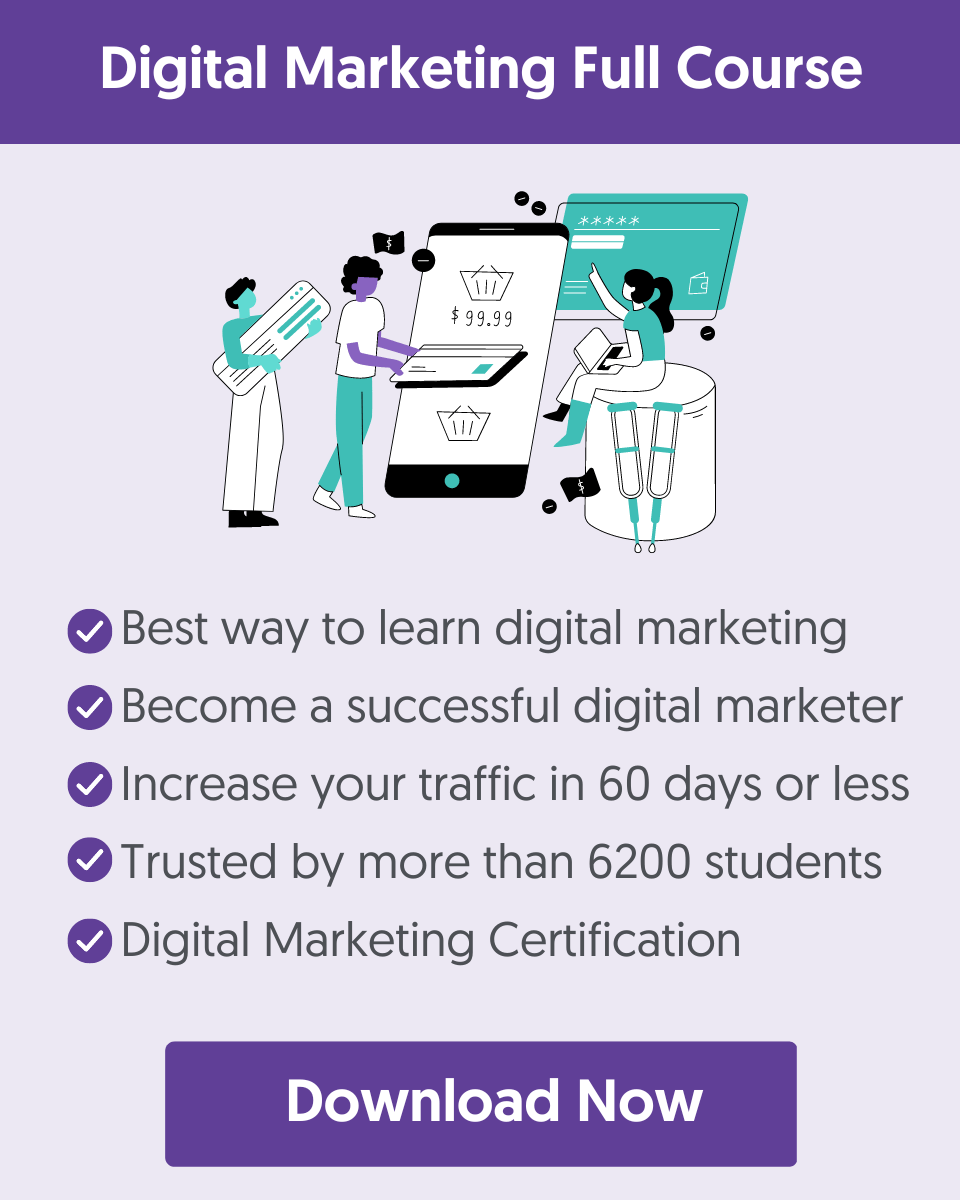What is Influencer Marketing & How It Works
Influencer marketing has become one of the most effective ways to reach, engage, and convert your target audience. By leveraging the existing reputation and relationships cultivated by industry experts and thought leaders, brands can achieve incredible results.
Not only does influencer marketing help you connect with a broader audience, but it can help you build credibility and earn the trust of your consumers.
In this post, you’ll learn everything you need to know about the basics of influencer marketing, how it works, and how you can develop your own successful strategy.
What is Influencer Marketing?
Influencer marketing is a marketing process involving hiring influencers to promote or recommend products to their online audience.
Influencer marketing takes a relatively old concept and adapts it for a new generation of buyers. The original roots of influencer marketing formed in the days when companies would purchase the endorsement and support of celebrities to capture new customers.
Influencer marketing today also uses endorsements and product mentions from well-known and popular individuals but focuses primarily on the digital landscape.
Influencer marketing works because of the high degree of trust specific influencers have developed with their following.
Recommendations from influencers serve as a form of social proof, driving new customers to your products and elevating your brand status.
Importance of Influencer Marketing
Demand for influencer marketing has grown significantly in recent years as consumers have become less trusting of traditional ads.

In 2023, the market for influencer marketing was estimated to be worth around $21.1 billion.
- Around 93% of marketers now work with influencers for at least some campaigns.
- According to one study, a 1% increase in influencer marketing spending leads to an engagement boost of around 0.5%.
- Around 61% of consumers trust product or service recommendations from influencers, while only 38% say they trust recommendations from the brand itself.
What is an Influencer?
An influencer is anyone with the ability to affect the purchasing decisions of others. They have a significant amount of authority in their industry and are considered a “thought leader” on a specific topic, such as fashion, beauty, or healthcare.
Influencers use their position in the market, their knowledge, and their relationship with their audience to enhance the credibility of other brands.
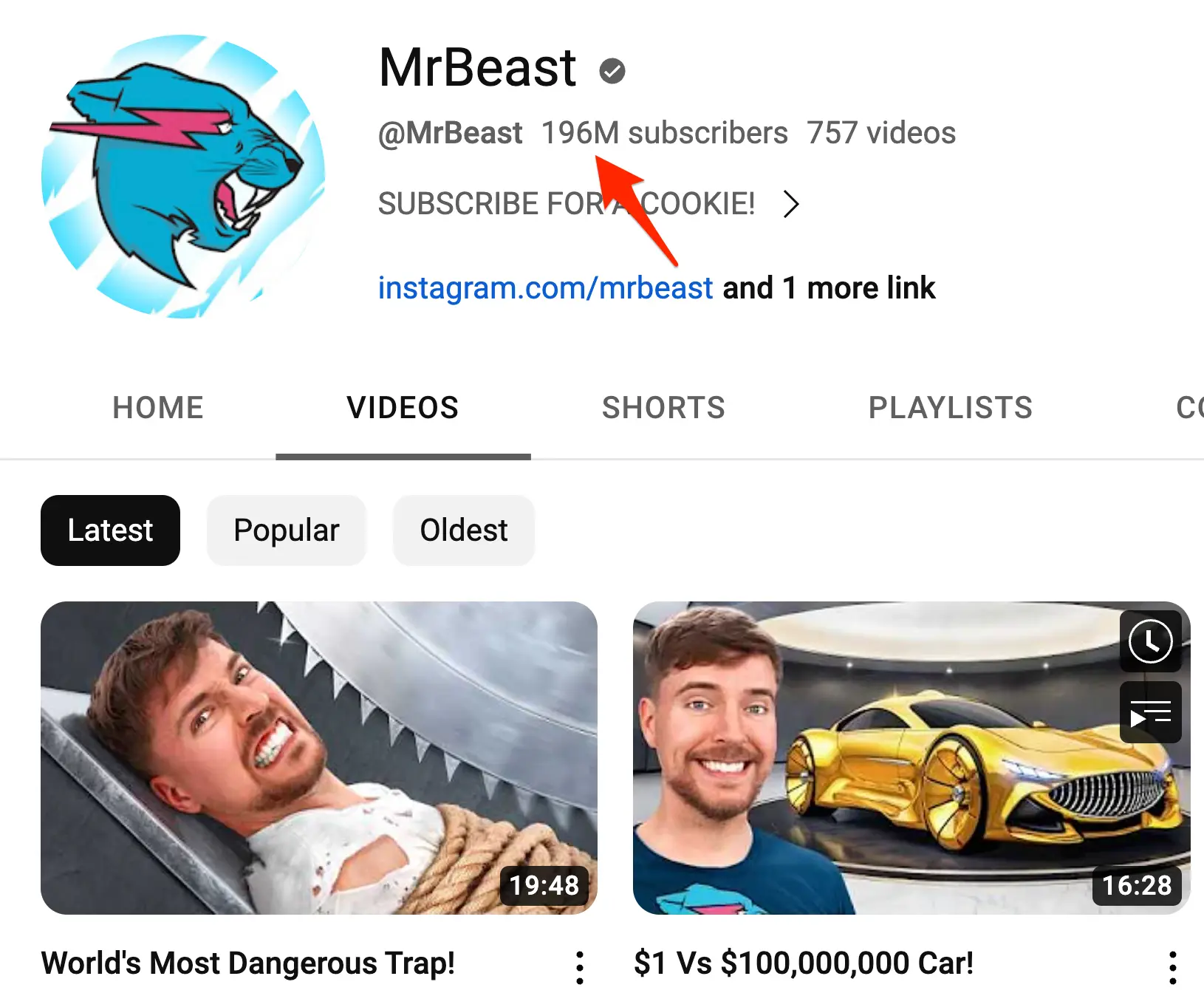
In the past, the influencer marketing landscape was dominated by celebrities, such as musical artists, athletes, and famous public figures. Today, influencers come in a range of sizes and types, working across social media channels like YouTube and TikTok.
How Does Influencer Marketing Work?
Influencer marketing involves a collaboration between businesses and individuals who already have a strong presence online and a connection with a specific target audience.
Brands work with influencers by paying them to produce content that captures consumers’ attention, and drives leads to a specific store, product, or service.
Influencer content includes everything from sponsored posts mentioning a product to reviews and even videos and images that feature a particular product.

Fundamentally, the steps involved in an influencer collaboration include:
Identifying an audience: Selecting a specific “ideal customer” to reach with an influencer marketing campaign. Brands need to understand their customers’ goals and pain points, which social platforms they use, and who they follow online.
Choosing social media platforms: Influencers work across various platforms, from YouTube to Instagram. The right platform for your business will depend on which channels your consumers use most frequently.
Researching and finding influencers: Determining what type of influencer you want to work with (macro, micro, nano, etc) and choosing someone who can effectively promote your brand’s values to the right target audience.
Selecting campaign goals: Setting specific goals for influencer campaigns, such as increasing brand awareness, improving traffic to a website, or increasing sales. This helps companies to determine which metrics to monitor during campaigns.
Monitoring campaign performance: Assessing everything from traffic growth on your website to increased follower counts on social media, engagement metrics, and improvements to your brand reputation.
What Are The Benefits of Influencer Marketing?
Compared to traditional marketing strategies, influencer campaigns can deliver a host of unique benefits, from improved relationships with your target audience built on trust to extensive brand reach.
Influencer marketing can help to drive engagement with customers, encouraging them to connect with your company. Plus, it’s specifically well-tuned to the preferences of younger generations of consumers.
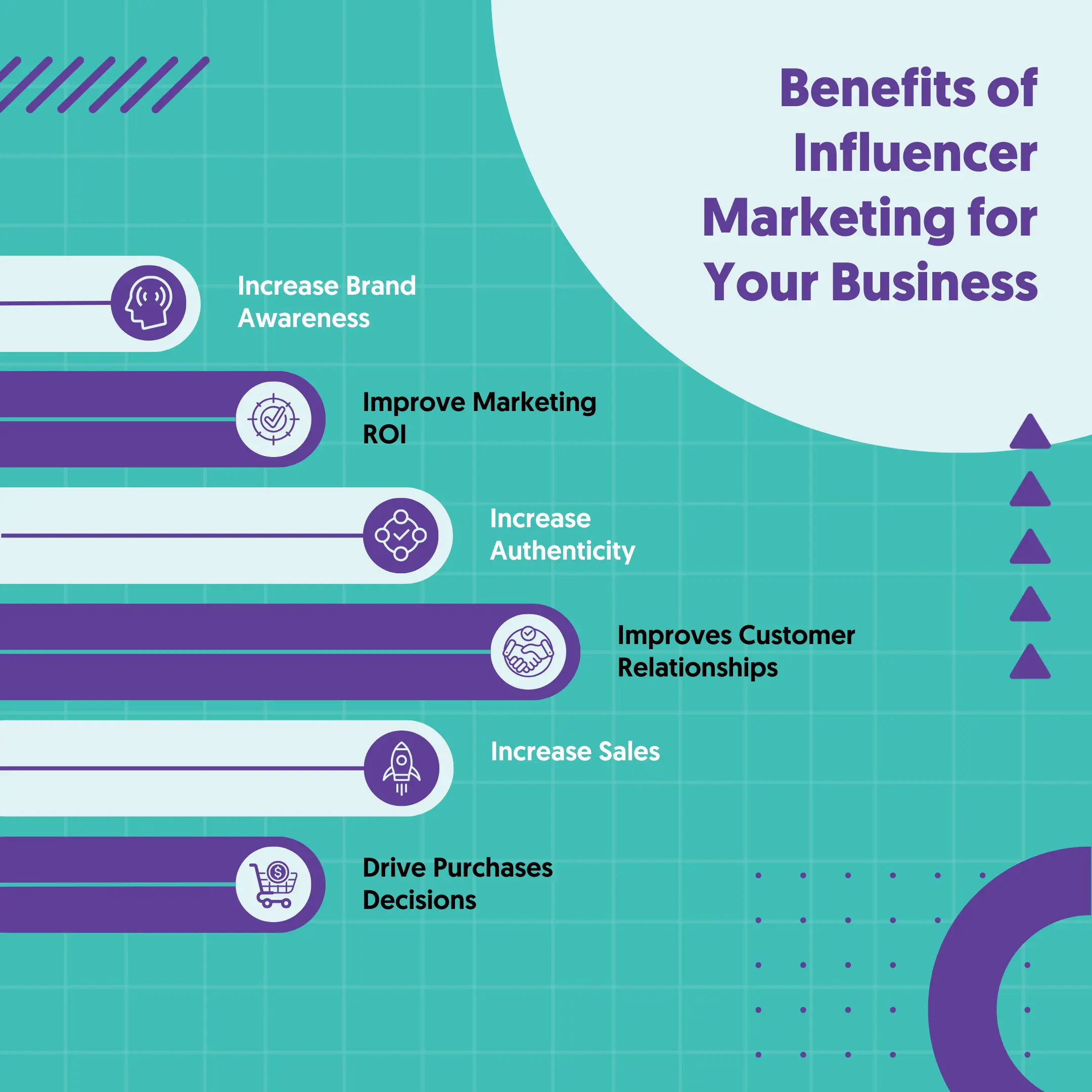
Used correctly, influencer marketing can:
Increase sales: Social media influencers can play a significant role in guiding purchasing decisions. 55% of consumers who follow influencers today say they’re more likely to purchase products from a brand that partners with an influencer.
Improved marketing ROI: Influencer marketing can have a phenomenal return on investment. 1 in 4 marketers leveraging influencer marketing says it delivers the second-highest ROI of any campaign strategy.
Improves customer relationships: Customers are more likely to trust the recommendations of influencers than brands. 61% of Gen Z and millennial customers say they trust influencers on social media channels.
Boost brand awareness: Influencer marketing can help you connect with a wider audience by aligning your company with people who have already captured the attention of relevant consumers in your niche.
Increase authenticity: Influencers help companies to establish social proof and credibility. They help companies to share content in an authentic and human format, making brands appear more reliable and trustworthy.
What Are The Different Types of Influencers?
As mentioned above, there are various different types of influencers in today’s digital landscape. While the follower count of each influencer might vary, each type of influencer can deliver their own unique benefits to brands.
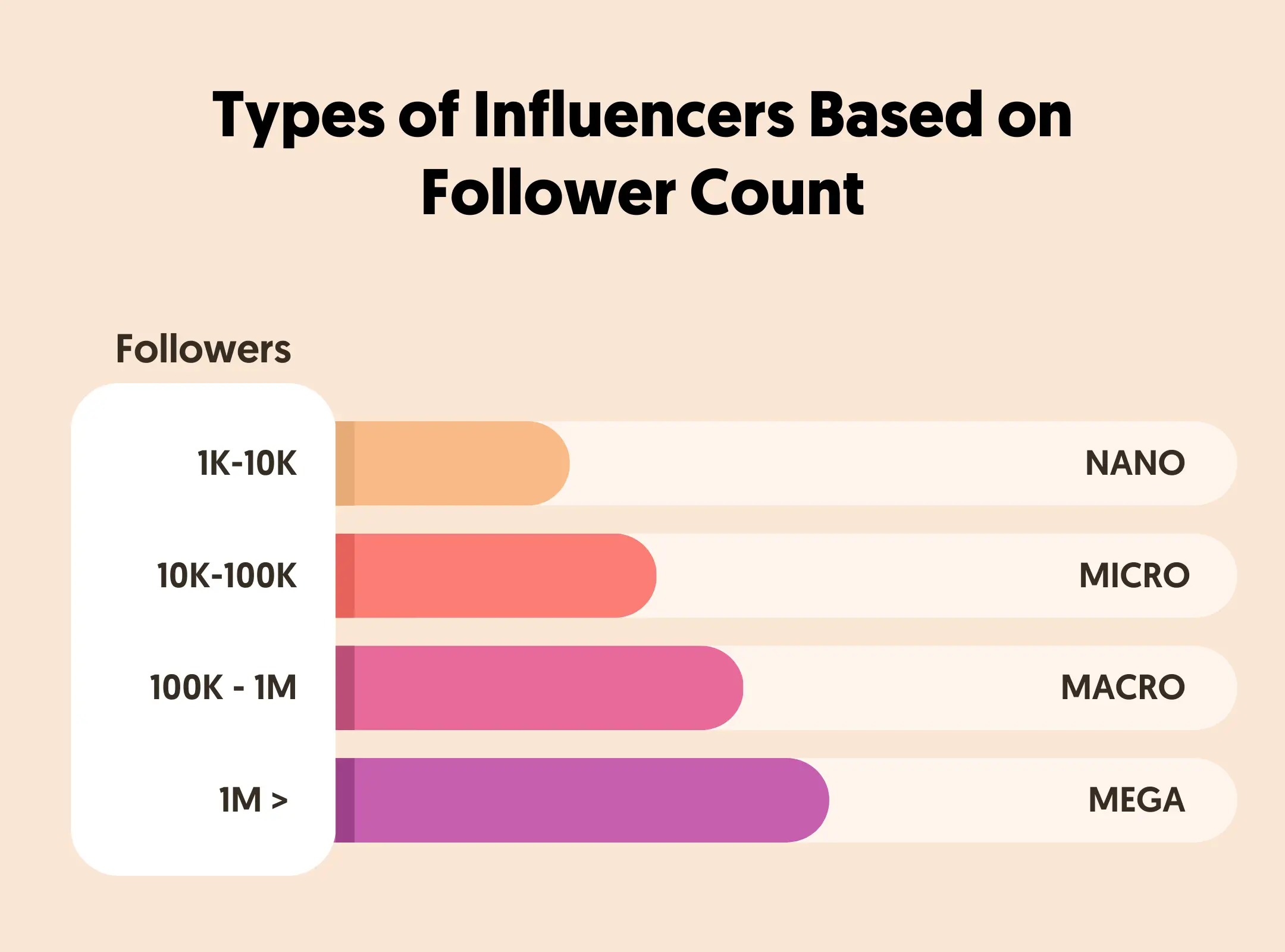
The most common forms of influencers include:
Mega or Celebrity influencers
Mega influencers, or celebrities, generally have a huge following of more than 1 million people. Common examples include Kim Kardashian, Cristiano Ronaldo, or well-known YouTube stars like Mr. Beast. Their celebrity status gives them access to a wide audience.
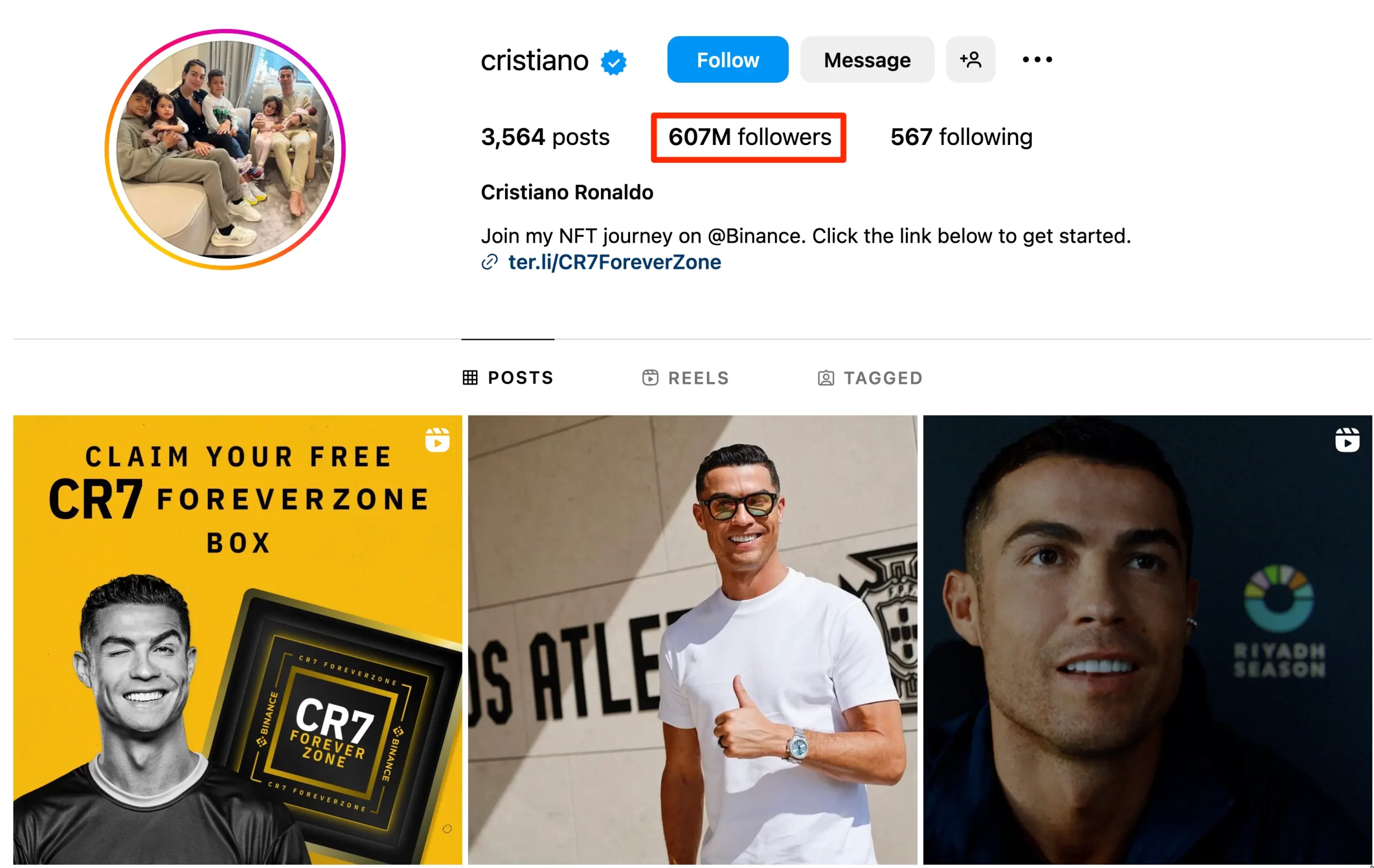
This makes mega influencers excellent for increasing brand exposure and boosting brand awareness.
However, partnering with mega influencers can be extremely expensive. Additionally, the broad following of mega influencers can make it harder for companies to target specific niche groups of consumers.
Macro Influencers
Macro influencers usually have between 100,000 and 1 million followers. Though not considered traditional celebrities, macro-influencers have a great deal of authority in their chosen industry.
They constantly create high-quality content relevant to their audience and are seen as thought leaders in their niche. Most macro influencers offer a more targeted approach to marketing than celebrities, but they can still be expensive to work with.
Micro-influencers
Accounting for almost half of all the influencers in the world today, Micro-influencers generally have between 10,000 and 100,000 highly engaged followers. Micro-influencers have a strong presence on certain platforms, such as Instagram or YouTube.
They focus on attracting the attention of a specific niche, with genuine interactions, creative content, and unique recommendations. Although Micro-influencers are often cheaper to work with than macro or mega influencers, they can deliver higher levels of engagement.
Nano Influencers
Despite their smaller audience size (usually fewer than 10,000 followers), nano influencers are quickly becoming one of the most valuable types of influencers for businesses. They focus on connecting with a very specific audience, through personable content.
Studies show that nano influencers with under 5,000 followers generally have an engagement rate of around 5%. The reason for this is nano influencers invest heavily in forming deeper relationships with consumers.
Examples of Successful Influencer Marketing Campaigns
Creating an effective influencer marketing campaign requires a careful strategy. However, with the right campaigns and planning, companies can achieve phenomenal results.
Here are some of the top examples of successful influencer campaigns from recent years.
Sugar Cosmetics
In March 2023, Sugar Cosmetics launched an influencer campaign focused on celebrating female empowerment. The #BeYourOwnMuse campaign featured a diverse group of influencers from different backgrounds, sharing advice on how to boost your confidence.

The campaign was a phenomenal success, generating more than 1 million engagements on social media and driving a massive increase in sales. The strategy worked because it combined authentic storytelling with diversity, ensuring the company could reach a wide audience. Plus, each influencer campaign featured a clear call to action.
Sugar Cosmetics demonstrated a commitment to supporting its target audience in their campaigns, boosting their brand equity, and building stronger relationships with consumers.
Tinder
Featuring a wide selection of YouTube videos, as well as content on TikTok and Instagram, Tinder’s “It Starts with a Swipe” campaign gained a lot of attention in 2023.

The campaign showcased influencers from around the world, chosen for their connection with a variety of different consumers with varying sexual preferences and gender identities. Videos included influencers sharing their own personal stories about how they met their partner through Tinder.
The campaign led to a 20% increase in new users on the Tinder platform, as well as 1 billion impressions across social media. Not only was the content inspirational, but it was also praised for being highly inclusive, appealing to younger generations such as Gen Z.
BMW
Keen to draw attention to its new plug-in hybrid car, BMW collaborated with a popular K-Pop musician and TikTok influencer on the “e-ideal Vibe” campaign. The influencer produced a remix of the popular song “thunder” from Imagine Dragons, using sounds taken from the car.
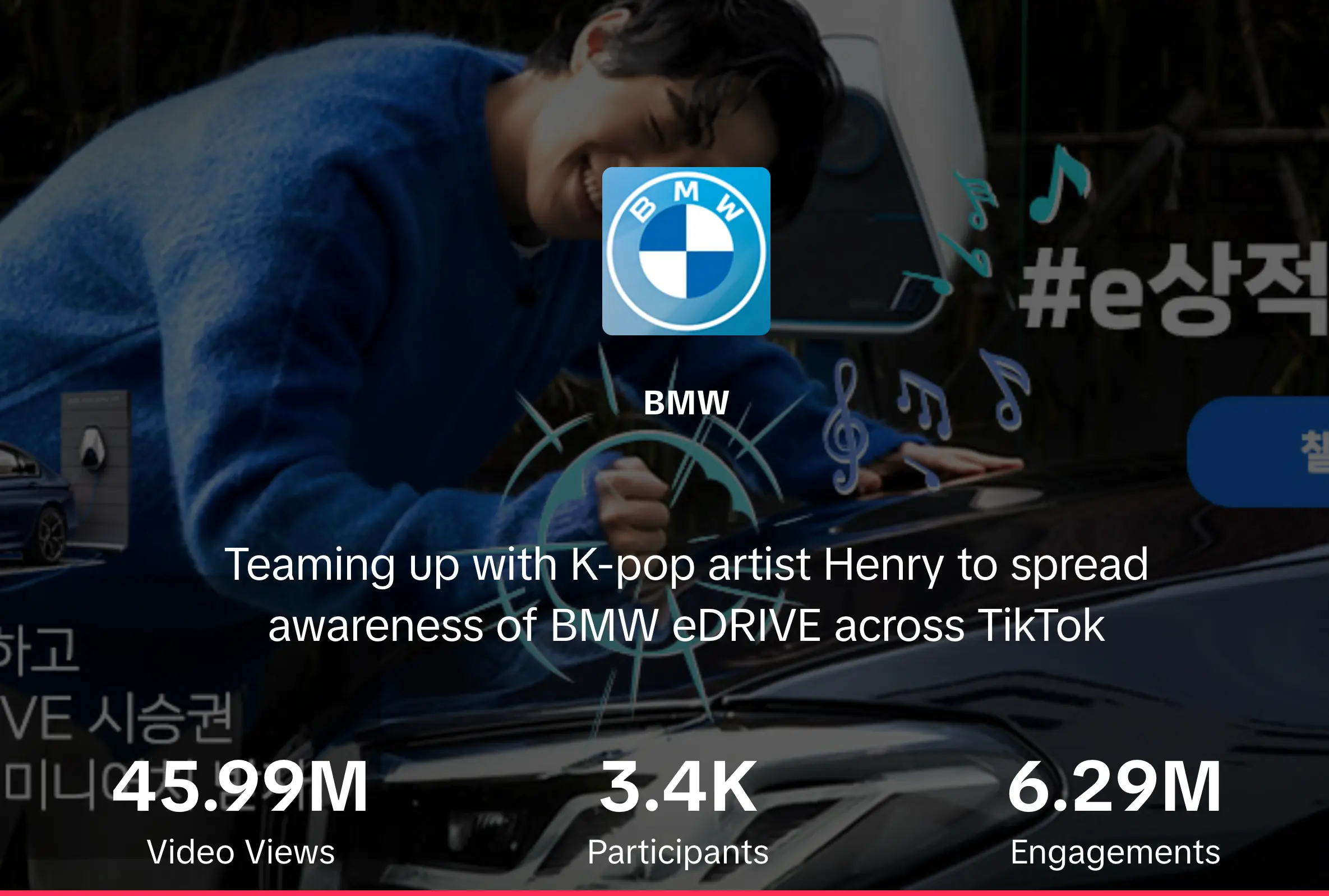
This song served as the basis for a “#BMWeDrive” hashtag challenge, where creators were called to create different types of videos using the remixed sample. The company even produced a series of branded ads to accompany the campaign.
The campaign attracted more than 45.99 million video views, drove 6.29 million engagements, and reached consumers in 49 countries worldwide.
How to Create an Influencer Marketing Strategy
Now you know what influencer marketing is, how it works, and why it’s so valuable, it’s time to start creating your own campaigns.
Here are the key steps involved in building an influencer marketing strategy that drives results.
- Set Realistic Campaign Goals
- Identify Your Target Market
- Choose the Right Influencers
- Agree on How Influencers Will Promote Your Products
- Create Dedicated Landing Pages
- Launch The Campaign
- Analyze Campaign Results and Measure ROI
1. Set Realistic Campaign Goals
The first step in developing any successful marketing campaign is establishing clear goals. It’s important to determine what “success” is going to look like for your campaign.
For instance, do you want to drive awareness for your brand, increase traffic to your website, or boost sales? The goals you choose will form the basis of your strategy.
For example, product placements might be ideal for driving awareness, while promotional campaigns featuring unique coupon codes from influencers might help increase sales.
Crucially, your influencer marketing goals should be both realistic and “SMART”.
Defining realistic goals means being reasonable about what you can expect to achieve. Even if your influencer has millions of followers, not every consumer will necessarily be interested in buying your product or service.
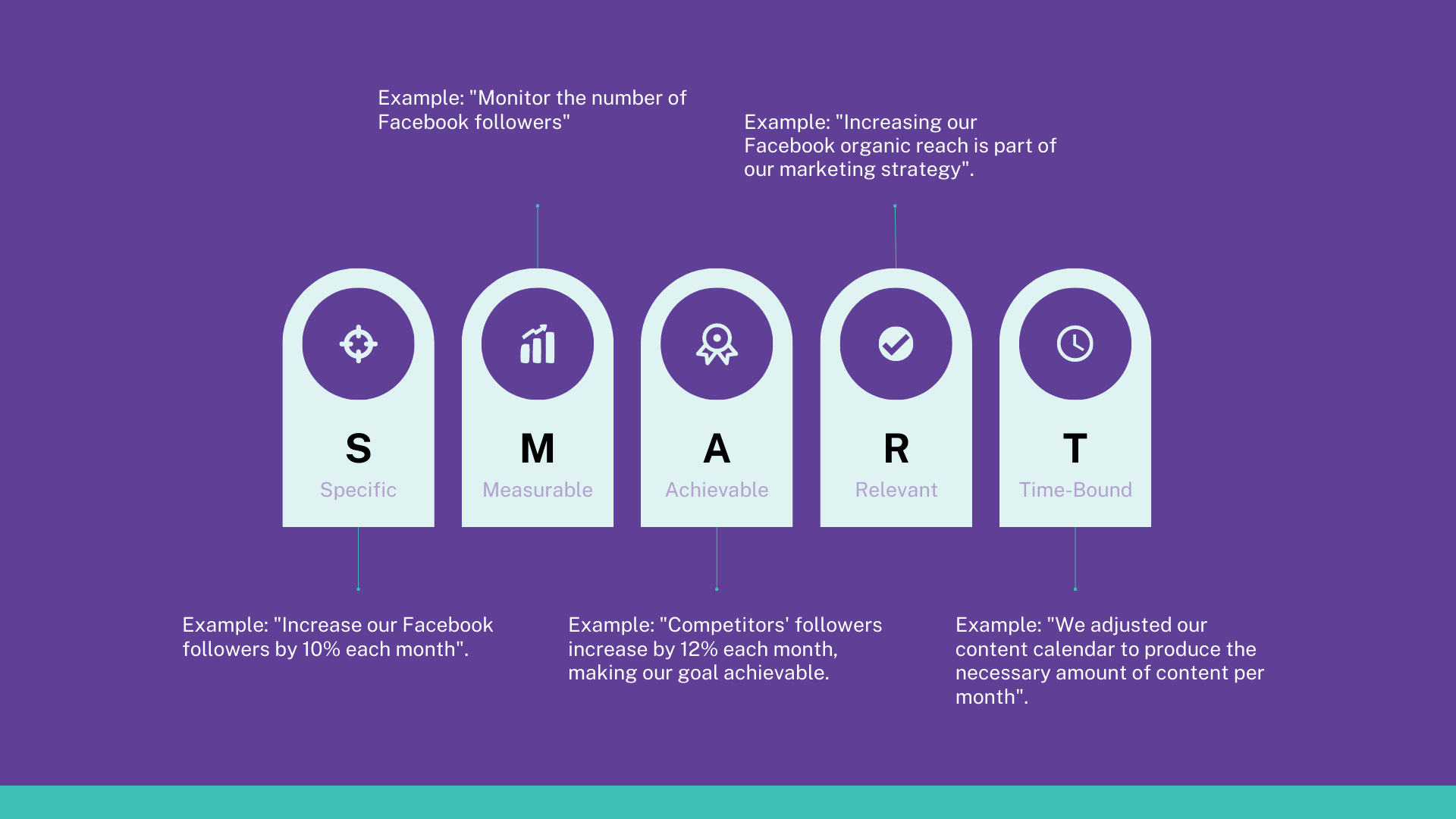
Setting SMART goals means ensuring your targets are Specific, Measurable, Attainable, Relevant, and Time-Bound. In other words, rather than just saying you want to increase traffic, you might set a SMART goal like:
“We want to boost traffic on our [specific product] page by 20% in the next 3 months, using influencer marketing product placements, reviews, and recommendations.”
2. Identify Your Target Market
Next, it’s crucial to define who you want to reach with your marketing campaigns. Every product or service has a distinct “ideal audience”, made up of people who have challenges you can solve, or goals you can help them achieve.
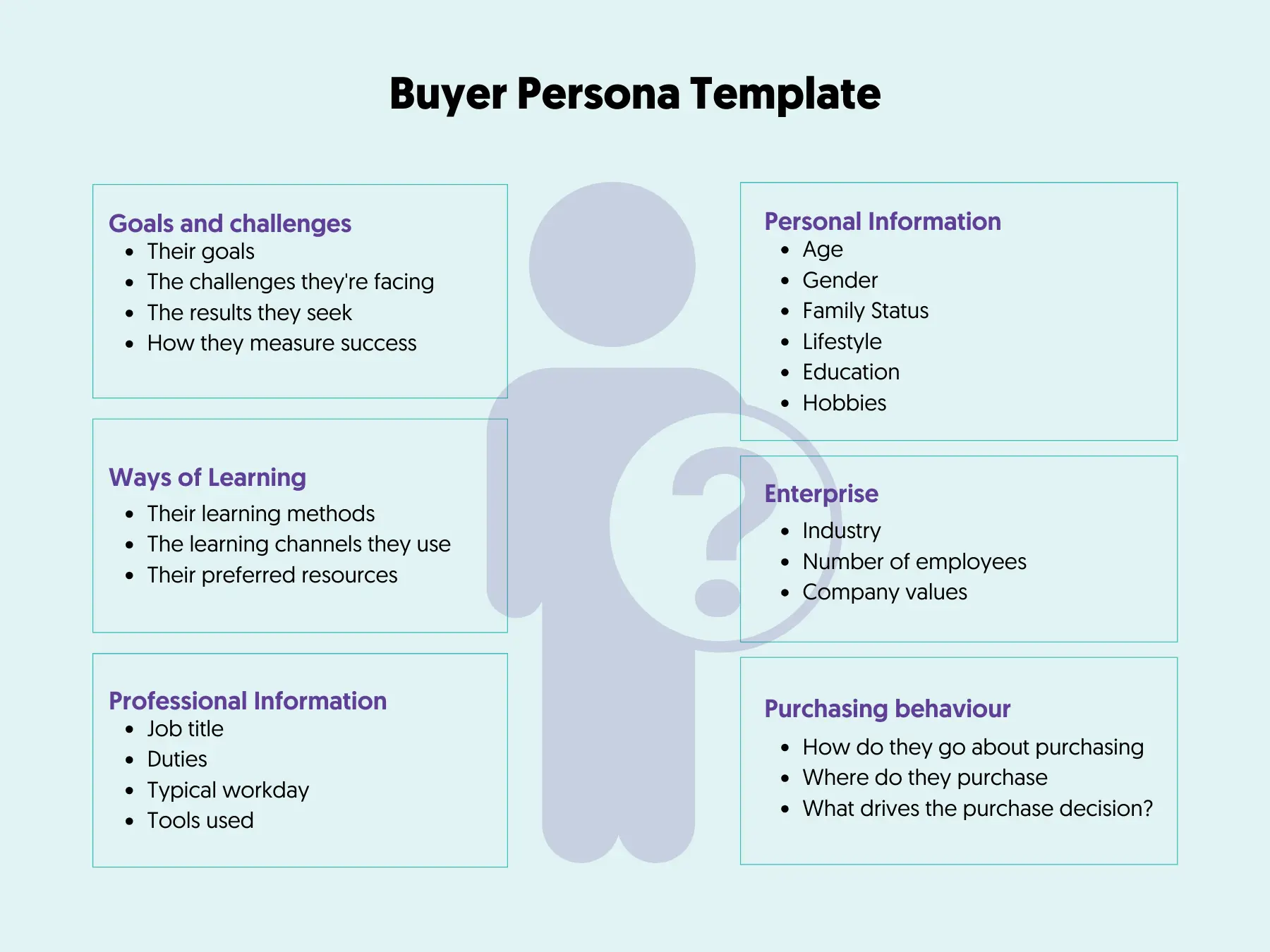
A deep understanding of your target audience will ensure you can craft messages that resonate correctly. Plus, it means you can refine your search for the correct influencers, focusing on creators who already have a strong connection with the right customers.
Learn as much as possible about your audience by conducting extensive market research and examining your competitors. A competitor analysis can give you a deeper insight into the types of customers who can benefit from your products or services.
Using your existing data, such as results from SEO and social media campaigns, can also show you what types of customers already engage with your business. It can also help to create buyer profiles, outlining key demographic, behavioral, and psychographic data for your ideal customers.
3. Choose the Right Influencers
Choosing the right influencers can be one of the most complex parts of building a strong influencer marketing campaign. Crucially, it’s not enough to simply focus on how many followers a potential influencer has. You need to ensure your partner is connecting with the right types of consumers and members of your specific target audience.
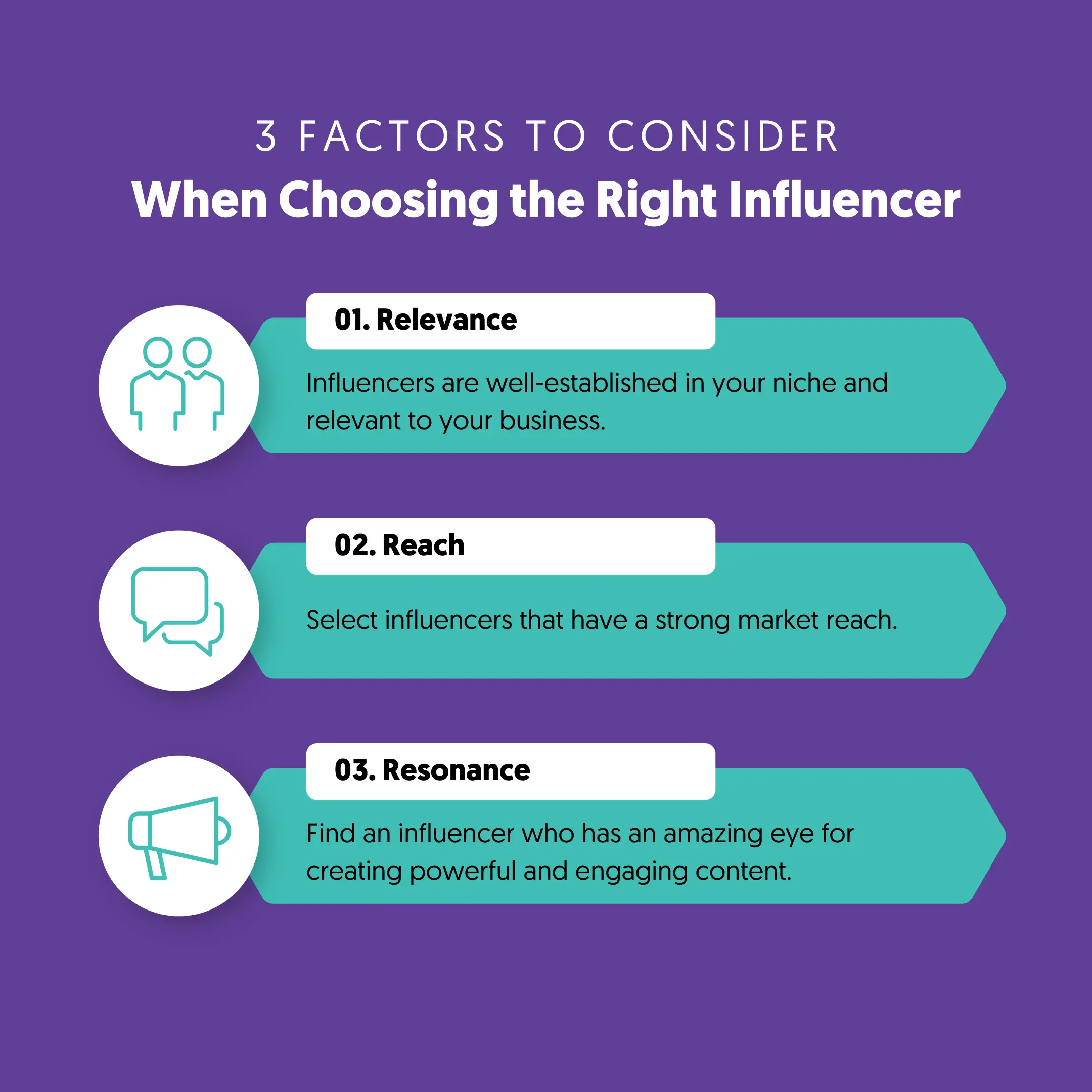
Focus on the three “R’s” when selecting creators to work with: relevance, reach, and resonance.
In other words, make sure your influencers are already well-established in your niche or industry, that they have a strong market reach, and an amazing eye for creating powerful and engaging content.
There are plenty of ways to find influencers, depending on the platform you’re using. For instance, TikTok has its own creator marketplace to help you seek out partners. You can also use influencer directories or reach out to creators directly.
When narrowing down your choices, focus on influencers with a high level of audience engagement, a strong connection with your brand values, and evidence of creating successful campaigns for similar companies.
4. Agree on How Influencers Will Promote Your Products
Next, you’ll need to determine how you’re going to work with your influencer to promote your products. As mentioned above, there are various options to choose from. Some influencers create sponsored content that highlights the unique benefits of your solutions.
Others can simply wear or showcase your products in their videos and visual posts. Influencers can also conduct reviews or comparisons that help to draw attention to your items and their value.
It’s important to outline exactly what you expect from your influencer during the early stages of your collaboration. Share your campaign goals with them, and let them know how you’ll measure results to determine whether each campaign is successful.
You can create a contract to help clarify expectations. This will also help influencers to understand how they’ll be paid. Make sure you also set clear guidelines on content creation, guiding your influencers on what kind of terms they can use and what they should avoid.
Additionally, it’s important to think about how you’re going to manage disclosure. There are guidelines from the FTC that require influencers to be clear about when they’re working with a brand and being paid to promote products.
5. Create Dedicated Landing Pages
Often, the purpose of an influencer is to drive action from consumers, encouraging them to visit your website or connect with your company in some way. Creating landing pages you can send specific customers to when they click on an influencer link is often valuable.
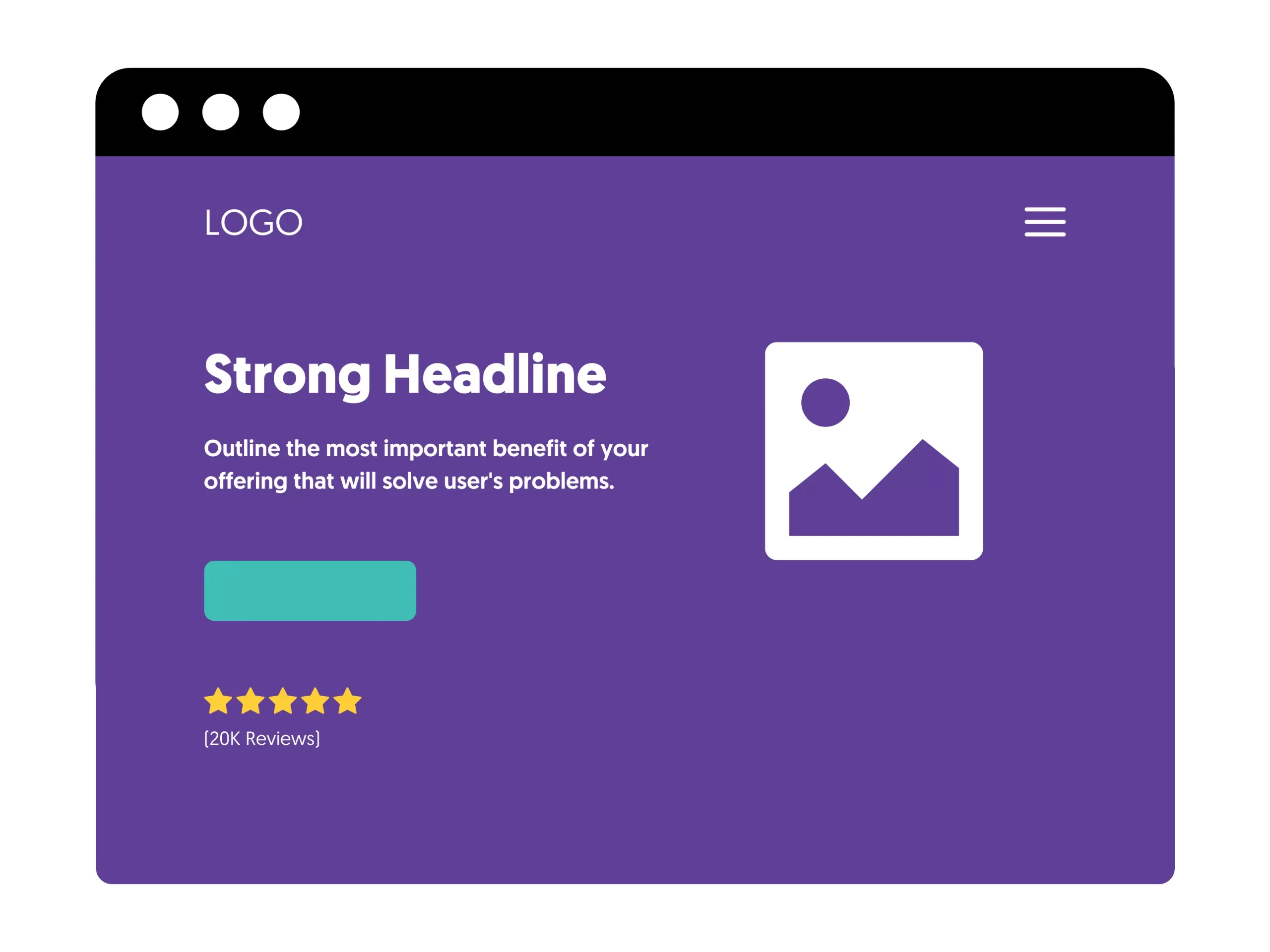
They can help you track the performance of your campaigns thanks to the use of UTM codes on links. This makes it easier to determine which influencers and marketing strategies are driving the most conversions or business results.
Since most influencers operate on social media channels, it makes sense to ensure your landing pages are optimized for mobile devices. Ensure you’re not overwhelming your audience with too much information at once, and always check that your landing pages are consistent with the messaging and promotions your influencers use.
Remember to add a clear call to action to your landing pages, telling customers what you want them to do next. This could be asking them to download a digital product, purchase an item, or simply contact your business.
6. Launch The Campaign
When you have your landing page established, and your UTM links set up, you can launch your campaign with your influencer. Remember, although your influencer will be responsible for driving positive engagement from your audience, your work isn’t over.
You’ll need to ensure you’re monitoring the impact of each campaign carefully. Keep the lines of communication open with your influencer, so they can inform you about engagement levels, responses to certain content, and other information.
Before the campaign:
- Set clear goals with your influencer and establish KPIs
- Provide access to brand content and editorial guidelines
- Establish which channels the campaign will run on
- Set a date for each post, and determine how long the campaign will run
During the campaign:
- Monitor engagement in the form of likes, comments, and shares
- Collaborate with your influencer to adapt the campaign as necessary
- Gather data about your audience’s behavior
After the campaign launch:
- Pay close attention to your influencer marketing metrics
- Connect with the influencer regularly about campaign opportunities
- Monitor your website traffic, follower count, and conversions
7. Analyze Campaign Results and Measure ROI
Finally, it’s time to determine the ROI of your influencer campaign. Throughout your entire marketing strategy, you should be paying close attention to key metrics, defined by your specific goals. For instance, you might want to monitor brand mentions, follower numbers, and post views if you’re trying to raise awareness.
If you’re focusing on increasing engagement, pay attention to click-through rates on your links, customer likes, comments, and shares, and the use of branded hashtags.
You can use your own analytical tools, such as Google Analytics, to monitor clicks and conversions and insights from your influencer’s social media analytics. The information you gather will help you make data-driven decisions about optimizing and improving future campaigns.
Conclusion
Influencer marketing is a great marketing channel. It’s the modern way to get attention to your brand fast, boost brand awareness, increase sales, and build an online audience.
The key to running profitable influencer marketing campaigns is choosing the right influencers. If you can find influencers based on relevance, reach, and resonance, you have more chances of succeeding rather than choosing influencers based on follower count.

